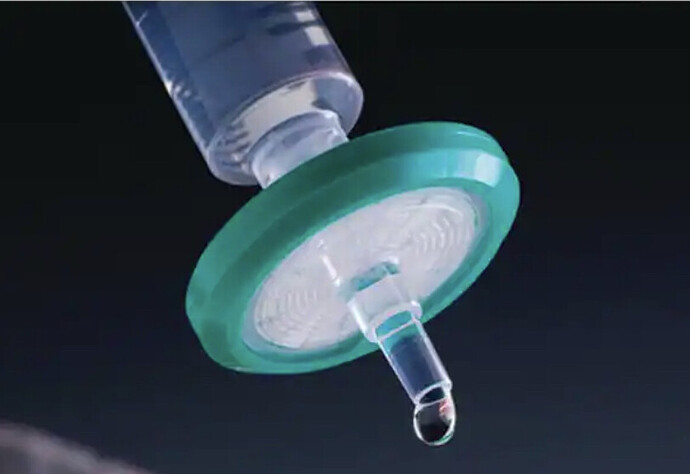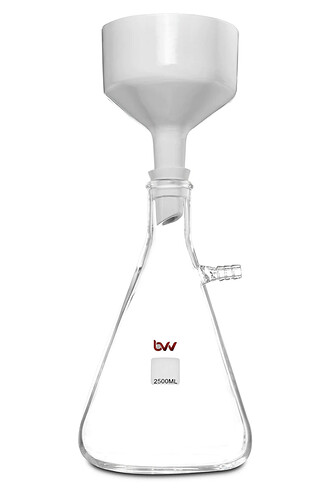Yep. Pore size is critical.
Why would folks post on the container they are filtering into?!? It is an essentially irrelevant detail.
If you’re doing small volumes, Eg:
Then a “syringe filter” at 0.2um will suffice, and the container your filtering INTO could be your coffee cup.
Making more? Get a buchner and a flask.
Scaled again? Use your buddies CLS or a modified beer keg as a receiver…

